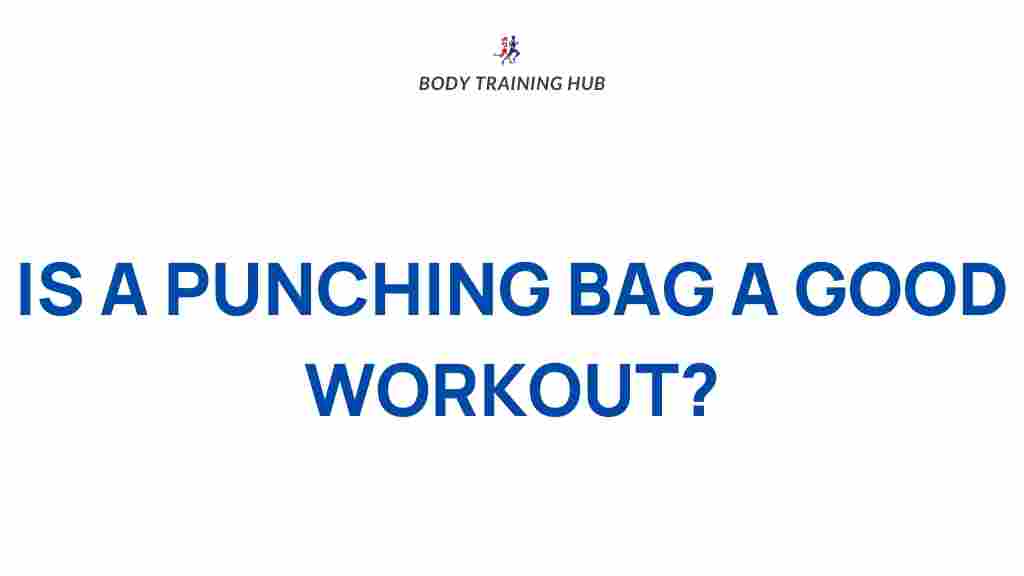Unleash Your Potential with Punching Bag Workouts
When it comes to improving fitness, strength, and mental focus, few exercises are as empowering and effective as punching bag workouts. Whether you’re a beginner looking to get in shape or a seasoned athlete aiming to fine-tune your training, the punching bag offers endless benefits. Not only does it provide a full-body workout, but it also helps to relieve stress, boost cardiovascular health, and build endurance. In this article, we will delve into how you can unleash your full potential with punching bag workouts, from the basic moves to advanced techniques.
Why Punching Bag Workouts Are Worth Your Time
Punching bag workouts are a fantastic way to increase your overall strength and endurance. By engaging multiple muscle groups at once, they offer a comprehensive workout that targets both upper and lower body muscles. But the benefits don’t stop there:
- Boosts Cardiovascular Health: Punching a heavy bag increases your heart rate, promoting better blood circulation and stamina.
- Stress Relief: Hitting the bag is a great way to release built-up tension and improve mental clarity.
- Increases Coordination: The dynamic movements of boxing and kicking develop hand-eye coordination.
- Improves Core Strength: Maintaining balance while punching engages your core muscles, helping you develop a strong, stable midsection.
Step-by-Step Guide to Getting Started with Punching Bag Workouts
Before you start using a punching bag, it’s essential to understand the basic techniques and safety precautions. Here’s a step-by-step guide to help you get started:
1. Choose the Right Punching Bag
Choosing the right punching bag is crucial. You’ll need to decide between a heavy bag, a speed bag, or a double-end bag, depending on your goals:
- Heavy Bag: Great for building strength, power, and endurance.
- Speed Bag: Ideal for improving hand-eye coordination and speed.
- Double-End Bag: Best for improving accuracy and reaction time.
2. Get the Right Gear
While a punching bag provides most of the workout, wearing the right gear will ensure safety and comfort. Key items include:
- Boxing Gloves: Protect your hands and wrists from injury.
- Hand Wraps: Provide added support for your wrists and knuckles.
- Footwear: Comfortable sneakers or boxing shoes that offer good grip.
3. Learn Basic Punching Techniques
Proper punching technique is vital to avoid injury and maximize the effectiveness of your workout. Start by mastering the basic punches:
- Jab: A quick, straight punch with your lead hand.
- Cross: A powerful punch thrown with your dominant hand.
- Hook: A punch thrown in a semi-circular motion to the side of your opponent’s head.
- Uppercut: A punch thrown upward, typically aimed at the chin.
4. Focus on Footwork
Incorporating proper footwork into your punching bag workout is essential for maintaining balance and moving effectively. Practice shifting your weight and pivoting as you punch, always keeping your feet shoulder-width apart for stability.
5. Build a Routine
Once you’ve learned the basic techniques, build a routine that includes a combination of punches, footwork, and endurance training. A sample beginner routine might look like this:
- Warm-up (5 minutes)
- Jab-Cross combo (3 minutes)
- Jab-Cross-Hook combo (3 minutes)
- Uppercut combo (3 minutes)
- Cooldown (5 minutes)
Advanced Punching Bag Workout Techniques
Once you’ve mastered the basics, you can take your workouts to the next level by incorporating advanced techniques:
- Shadow Boxing: Practice your punches in the air before hitting the bag to improve speed and form.
- Combination Drills: Create complex punch combinations to challenge your coordination and endurance.
- Interval Training: Alternate between high-intensity punching and short recovery periods for a powerful cardiovascular workout.
- Kickboxing: Add kicks to your punches for a full-body workout.
Troubleshooting Common Punching Bag Workout Issues
While punching bag workouts are fun and rewarding, you may run into some challenges. Here are a few common issues and how to solve them:
- Pain in Wrists or Hands: Make sure you’re using hand wraps and proper gloves. If the pain persists, check your punching technique.
- Bag Movement: If the bag swings too much, adjust its height or secure it more tightly to the ceiling.
- Muscle Fatigue: Overtraining can lead to muscle strain. Ensure you’re giving your body enough rest and recovery time.
Additional Tips for Maximizing Your Punching Bag Workout
Here are a few more tips to make your punching bag workout even more effective:
- Stay Consistent: Regular workouts will lead to the best results.
- Mix It Up: Keep your routine fresh by changing the types of punches or the speed of your workout.
- Track Your Progress: Use a fitness app or journal to track your workouts and set new goals.
Conclusion
Punching bag workouts are an incredible way to improve your physical fitness while relieving stress and boosting confidence. Whether you’re aiming to get stronger, fitter, or simply looking for a fun way to work out, a punching bag workout offers a variety of benefits. By starting with the basics, learning proper technique, and gradually increasing the intensity of your sessions, you’ll be well on your way to unleashing your potential. Always remember to warm up before your workouts, cool down afterward, and listen to your body to prevent injury. So why wait? Grab a punching bag, start training, and experience the ultimate transformation in your fitness journey!
For more fitness tips and workout guides, visit our blog or check out this comprehensive guide on boxing training.
This article is in the category Strength & Recovery and created by BodyTraining Team

1 thought on “Unleash Your Potential with Punching Bag Workouts”